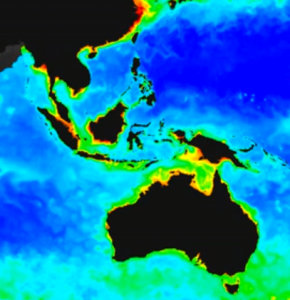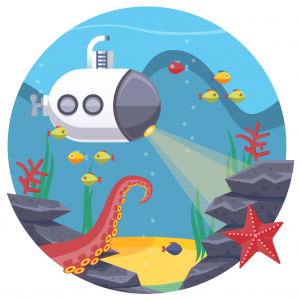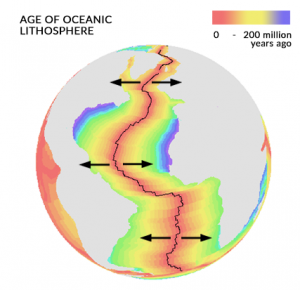A Complete Guide to Oceanography

What is Oceanography?
Water is all around us. In fact, 70% of Earth is oceans. Fisheries, the water cycle, weather, climate change, shipping routes…
Oceanography is a very relevant field of study that influences sustainable fisheries, economic growth, and the environment.
We can divide oceanography in several ways. For example, we see the primary branches of oceanography as chemistry, physics, biology, and geology.
- OCEANOGRAPHY – The branch of science that deals with ocean chemistry, physics, geology, and biology.
- OCEAN CHEMISTRY: How chemical properties of oceans interact including marine ecosystems, ocean currents, and fluid dynamics.
- MARINE PHYSICS: How ocean currents circulate including water column structure and fluid dynamics.
- MARINE BIOLOGY: How life in the oceans behaves in their natural habitats.
- OCEAN GEOLOGY: How ocean currents circulate including water column structure and fluid dynamics.
Even though, you can slice and dice oceanography in different ways…. here’s how we’ve divided the branches of oceanography.
Ocean Chemistry

Ocean chemistry or marine chemistry is a hot topic now. This is because climate change is happening from higher greenhouse gases in the atmosphere.
About 80 to 90% of heat from global warming is going into our oceans. So the oceans are like an enormous heat bucket absorbing 1000 times more heat than the atmosphere.
As oceans become more acidic, ocean chemistry studies the chemical properties of oceans interact including marine ecosystems, ocean currents, and fluid dynamics.
- LIMNOLOGY – How biological, chemical, and physical properties of lakes and ponds relate (often) to their terrestrial surroundings.
- OCEAN CHEMISTRY – How chemical properties of oceans interact including marine ecosystems, ocean currents, and fluid dynamics.
Ocean Physics

Ocean currents are like giant conveyor belts flowing through the oceans moving huge amounts of water all the time. We use physics to measure the constant motion.
For example, fluid dynamics measures how liquids mechanically flow in relation to forces acting on them. In a similar way, hydrology studies the movement of water on land.
If you want to understand ocean depth, you’d perform a bathymetric survey with sonar. These sonar instruments map out ocean bathymetry – something scientists are still currently trying to achieve.
- HYDROLOGY – How water travels in relation to land.
- BATHYMETRY – How deep oceans, seas, and lakes are relative to mean sea level.
- MARINE PHYSICS – How ocean currents circulate including water column structure and fluid dynamics.
- FLUID DYNAMICS – How liquids mechanically flow in relation to forces acting on them.
Ocean Biology

Marine biology focuses on the interaction between oceans and life. For example, hydrobiology assesses how aquatic life in water is distributed, interacts, and grows.
Because fisheries is a major global industry, sustainable fishing is essential to its success. We use ichthyology to understand how fish species evolve and grow including taxonomy, anatomy, and ecological importance.
Plankton are small, microscopic organisms that make a huge difference in our oceans. Planktology focuses on how plankton drift in the oceanic environment, contribute to carbon storage, etc.
- MARINE BIOLOGY – How life in the oceans behaves in their natural habitats.
- HYDROBIOLOGY – How aquatic life in water is distributed, interacts, and grows.
- AQUATIC ECOLOGY – How freshwater (lakes, ponds, wetlands, etc.) relates to flora, fauna, and the environment.
- ICHTHYOLOGY – How fish species evolve and grow including taxonomy, anatomy, and ecological importance.
- PHYCOLOGY/ALGOLOGY – How algae are distributed, grow, and are classified in aquatic ecosystems.
- PLANKTOLOGY – How plankton drifts in the oceanic environment and contributes to carbon storage.
- CETOLOGY – How whales, dolphins, and porpoises evolve, behave, and are distributed in nature.
Ocean Geology

Finally, ocean geology studies the structures of the ocean floor. Geophysics, chemistry, and sedimentology all tie into this subject.
For example, paleoceanography better understands how ocean history is reconstructed including how they circulated and evolved in the geologic past.
It also has deep ties with plate tectonics. As plates tear apart deep in the oceans, this is where we find the youngest rock on Earth.
- PALEOCEANOGRAPHY – How ocean history is reconstructed including how they circulated and evolved in the geologic past.
- MARINE GEOLOGY – How the chemical and physical structure and properties of the ocean floor have evolved, are composed, and will transform.

What Do Soil Scientists Do?
Hydrogeology Careers: What Do Hydrogeologists Do?
What is Meteorology? 15 Branches of Meteorology
What Is Geophysics – Become a Geophysicist
37 Branches of Geology
Ecology Careers: What Do Ecologist Do?
Geology Field Camp – What To Look For
What Do Meteorologists Do?
Geology Careers: What Do Geologists Do?
What Do Geotechnical Engineers Do?
100+ Branches of Earth Science
What Do Agronomists Do?
17 Branches of Astronomy
What Is a Toxicologist? Job Description and Duties